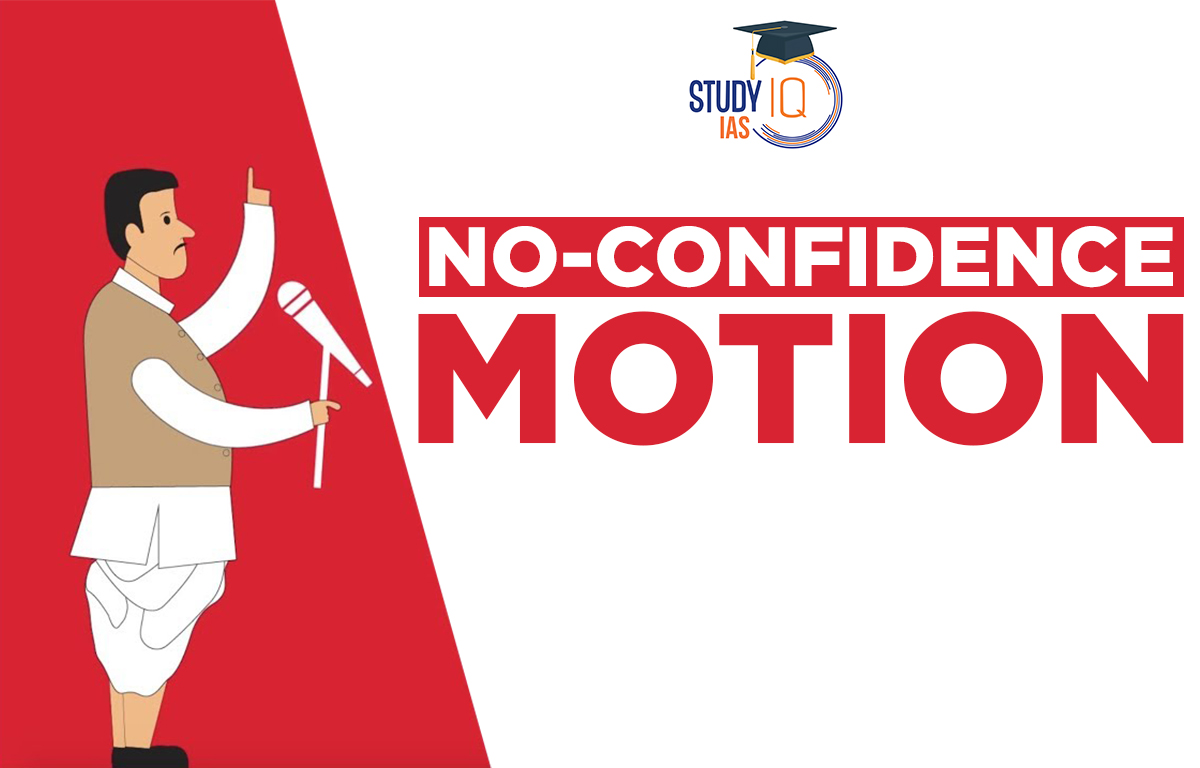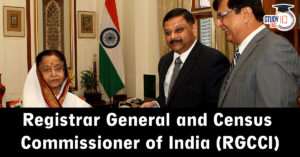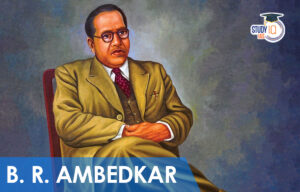Table of Contents
In a significant development, around 50 Opposition MPs have united to propose a no-confidence motion against Vice-President Jagdeep Dhankhar, citing issues with his conduct and the functioning of the Rajya Sabha. This motion is being contemplated under Article 67(B) of the Indian Constitution, which allows for the removal of the Vice-President through a resolution passed by a majority in the Rajya Sabha and approved by the Lok Sabha. The No Confidence Motion is an important part of Indian Polity which is an important topic in UPSC Syllabus.
Opposition Parties Plan No-Confidence Motion Against Vice-President Dhankhar
The Opposition is considering a no-confidence motion against Vice-President Jagdeep Dhankhar.
Process of Removal
- Article 67(B): This article provides the constitutional basis for the removal of the Vice-President of India.
- Resolution for Removal
- The Vice-President can be removed by a resolution passed by a majority of all the then members of the Rajya Sabha (this type of majority is also called ‘effective majority’)
- Such a resolution passed by the Rajya Sabha needs to be agreed to by the Lok Sabha.
- Notice: A resolution for removal of the Vice-President can be moved only after giving a notice of 14 days in advance to the incumbent vice-president.
| Remember This |
| A formal impeachment process as prescribed for the President is not required for the removal of the Vice-President. Further, no grounds for removal of the Vice-President are mentioned in the Constitution. |
No Confidence Motion
A No Confidence Motion is a procedure used in the Lok Sabha to show that members do not have confidence in the Council of Ministers. This motion does not apply in the Rajya Sabha. It is a formal way for Lok Sabha. members to express their disapproval. After the motion is passed, the ruling party is required to quit if it cannot demonstrate its majority in the Lok Sabha. The Lok Sabha’s No Confidence Motion is a crucial weapon against the Council of Ministers.
A No Confidence Motion, also known as a No-Confidence Vote, is a way for the opposition in the Lok Sabha to declare that the council of ministers is unfit to lead due to failures or issues. This motion can be introduced without needing to justify it beforehand, according to Rule 198 of the Lok Sabha’s rules.
As per Article 75 of the Constitution, the Lok Sabha oversees the council of ministers. The government stays in power as long as it has the support of the majority of Lok Sabha members. If 51% of the members support the No Confidence Motion, the government must resign. The opposition can also challenge the government to prove it has a majority by calling for a vote of confidence. Sometimes, the No Confidence Motion is used to force the government to address important issues.
History of No-Confidence Motion in Parliament
The first “No Confidence Motion” against the administration of then-Prime Minister Jawaharlal Nehru was presented in Parliament in August 1963. Acharya JB Kripalani proposed this motion; however, it only obtained 62 votes in favour and 347 votes against it.
The most No Confidence Motions against Indira Gandhi have ever been filed, 15 in all. The No Confidence Motion has been put out by CPI (M) leader Jyoti Basu at least four times. The No-Confidence Motion was the first to force the resignation of Morarji Desai’s administration. The No-Confidence Motion against his government was introduced twice in the Lok Sabha. The first time it was salvaged, but he lost most of it the second time, in 1978. Before the election, Morarji Desai resigned.
In 1979, a motion of no confidence was submitted against Chaudhary Charan Singh’s administration. Chaudhary Charan Singh suggested that the Lok Sabha be dissolved after submitting his resignation to the President. 1989 saw the dissolution of VP Singh’s cabinet as the BJP lost its backing. In 1993, Narasimha Rao’s administration was the target of a No-Confidence Motion, but he was able to defend it. In 1997, Congress stopped backing the United Front Government, compelling HD Deve Gowda, the prime minister at the time, to resign.
After failing to establish a majority, I.K. Gujral’s United Front Government was forced to resign in March 1998. Atal Bihari Vajpayee’s government barely lost the No Confidence Motion in 1999 by one vote, forcing him to resign. The nuclear agreement with the United States was the subject of a motion of no confidence against the Congress government in July 2008. However, Manmohan Singh, the then-prime minister, narrowly maintained his majority in the Lok Sabha and survived the No-Confidence Motion.
Provision for No-Confidence Motion
| Article 75 |
The No Confidence Motion is rooted in Article 75 of the Constitution of India. This article states:
|
Procedure of No-Confidence Motion in Lok Sabha
The motion of no confidence must follow a specific process that is outlined in Lok Sabha Rule 198. There is no Confidence or No Confidence Motion Article in the Indian Constitution. However, the Council of Ministers must collectively answer to the Lok Sabha, according to Article 75 of the Constitution of India. If the No Confidence Motion has the backing of 50 MPs or more (exclusively the Opposition), it may be brought before the Lok Sabha.
How is a No Confidence Motion Moved?
A No Confidence motion in the Lok Sabha begins when any member proposes it by giving a written notice to the Speaker, detailing their reasons. This proposal can only proceed after the Speaker’s approval. To introduce the motion, the member must secure the support of at least 50 other MPs. Once accepted, the motion is discussed after a designated period, allowing members time to prepare. During the debate, members present arguments for and against the motion, with the Prime Minister or a representative given the chance to defend the government’s position. After the debate, a vote is conducted, where members choose to vote either in favor of the motion, expressing no confidence, or against it, showing confidence in the government. If the motion passes with a majority, the government is expected to resign; if it fails, the government remains in power and continues its mandate.
No-Confidence Motion Significance
The Constitution states that a government can only continue in office if it has enough members of the Lok Sabha to form a majority. The Lok Sabha is the body to which the Council of Ministers collectively answers, according to Article 75(3) of the Indian Constitution. The Lok Sabha rules provide a procedure known as a “no-confidence motion” to test the collective responsibility.”
A no-confidence motion against the government can only be presented by a Lok Sabha MP with the backing of 50 other members. There is a discussion regarding the motion that follows. The government is informed via a no-confidence motion that the elected Parliament is no longer confident in it. To dismiss the government and disband the council of ministers, a resolution of no confidence is proposed.
Also Read: Financial Emergency
How many times were No Confidence Motions Passed in Parliament?
The first No Confidence Motion was introduced in 1963. Since then, a total of 26 No Confidence Motions have been moved in India. The government led by Indira Gandhi faced the most No Confidence motions.
Recent No Confidence Motions in Parliament:
- 1993: Narsimha Rao Government (won the vote)
- 1999: Atal Bihari Vajpayee (lost the vote by one vote)
- 2003: Atal Bihari Vajpayee (won the vote)
- 2008: Manmohan Singh Government (won the vote)
No-Confidence Motion UPSC
A crucial step in the legislative process is the No Confidence Motion. Members who support the No Confidence Motion demonstrate their lack of confidence in the leadership of the country. Although it doesn’t happen often, the opposition has occasionally defeated the incumbent party with more supporters.
| UPSC PYQ |
Q. Consider the following statements: (2013)
Which of the statements given above is/are correct?
Answer: b |
| Other Important Indian Polity Articles | |
| Cut Motions | Lok Sabha |
| Rajya Sabha | Parliament of India |
| Union Legislature | Devices of Parliamentary Proceedings |
| Question Hour in Parliament |
Zero Hour in Parliament |


 Mechanisms to Combat Judicial Corruption...
Mechanisms to Combat Judicial Corruption...
 Registrar General and Census Commissione...
Registrar General and Census Commissione...
 Ambedkar Jayanti 2025: Biography, Legacy...
Ambedkar Jayanti 2025: Biography, Legacy...





















